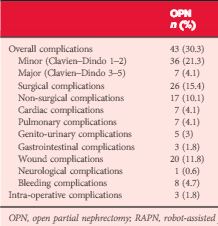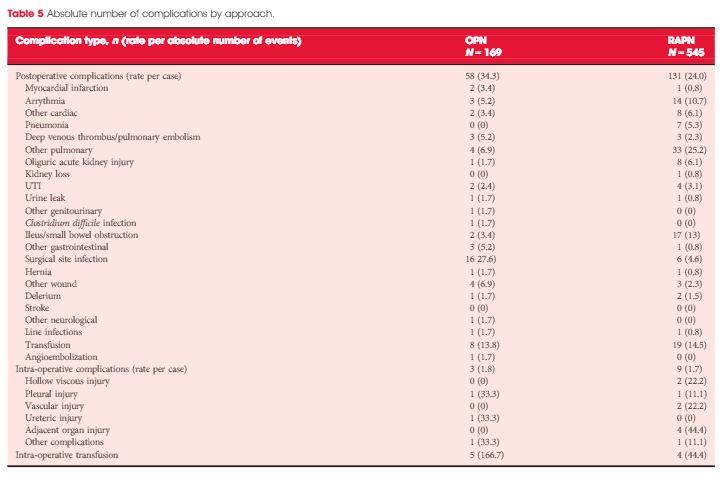Article of the Week: Predicting complications in partial nephrectomy for T1a tumours: does approach matter?
Every Week the Editor-in-Chief selects an Article of the Week from the current issue of BJUI. The abstract is reproduced below and you can click on the button to read the full article, which is freely available to all readers for at least 30 days from the time of this post.
In addition to the article itself, there is an accompanying editorial written by a prominent member of the urological community. This blog is intended to provoke comment and discussion and we invite you to use the comment tools at the bottom of each post to join the conversation.
If you only have time to read one article this week, it should be this one.
Predicting complications in partial nephrectomy for T1a tumours: does approach matter?
Objectives
To assess differences in complications after robot-assisted (RAPN) and open partial nephrectomy (OPN) among experienced surgeons.
Patients and Methods
We identified patients in our institutional review board-approved, prospectively maintained database who underwent OPN or RAPN for management of unifocal, T1a renal tumours at our institution between January 2011 and August 2015. The primary outcome measure was the rate of 30-day overall postoperative complications. Baseline patient factors, tumour characteristics and peri-operative factors, including approach, were evaluated to assess the risk of complications.
Results
Patients who underwent OPN were found to have a higher rate of overall complications (30.3% vs 18.2%; P = 0.038), with wound complications accounting for the majority of these events (11.8% vs 1.8%; P < 0.001). Multivariable logistic regression analysis showed the open approach to be an independent predictor of overall complications (odds ratio 1.58, 95% confidence interval 1.03–2.43; P = 0.035). Major limitations of the study include its retrospective design and potential lack of generalizability.
Conclusions
The open surgical approach predicts a higher rate of overall complications after partial nephrectomy for unifocal, T1a renal tumours. For experienced surgeons, the morbidity associated with nephron-sparing surgery may be incrementally improved using the robot-assisted approach.





Enjoyed reading this article. A couple of comments:
1. In the abstract the complication rate is given as open 30.3% vs robot 18.2% whereas in the main body of results in the paper they are stated to be 25.4% open vs robot 18.2%. The p value in each area is the same at 0.038. The raw numbers for open complications are 43/169 which is 25.4% so I assume the % in the abstract is a mistake. It’s a shame because it is the key number of the whole manuscript and because the abstract is all many people read.
2. In such a detailed analysis it is surprising to see no comment on the number of cases that involved surgery on single kidneys and also no comment on the nature of ischaemia employed in the open group i.e. Cold or warm. PN in single kidneys undoubtedly carries more risk and in our practice in London, PN in single kidneys is now the commonest reason for choosing open surgery because of the ability to cool the kidney.
I would be interested to hear others views and of course have the authors clarify the numerical disparities.